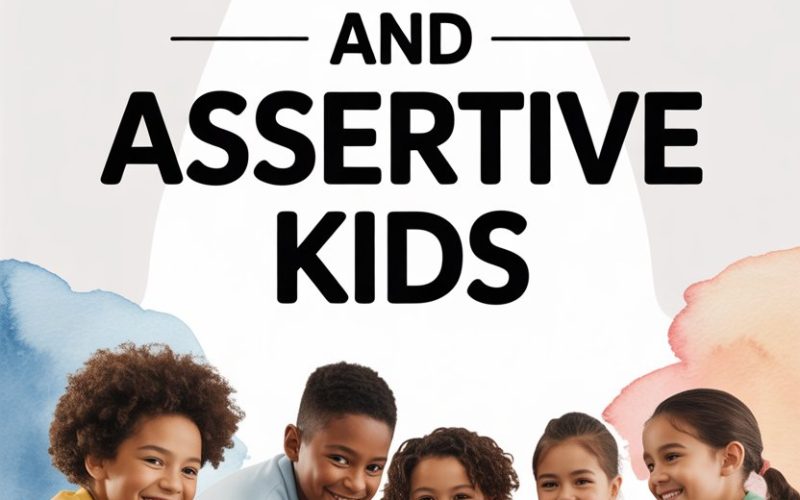Some days, it feels like the world wants our kids to sit quietly, colour inside the lines, and say “yes, sir” till they’re forty. Yet, most parents want children who stand tall, speak up, and hold their own when it matters.
Assertiveness is the not-so-secret ingredient for thriving in classrooms, playgrounds, and eventually, boardrooms.
The trick for us—a generation of adults doing three things at once while pretending the pasta isn’t burnt—is actually helping our kids get there.
The good news? Strength and assertiveness aren’t factory settings. They grow with a bit of practice and a helping hand from mum, dad, or that one carer who always brings the best snacks.
Modelling Assertiveness Without Morphing Into a Drill Sergeant
Kids notice more than we think. They watch us order coffee, negotiate who takes out the bins, and (sometimes) stand up to that aunt who always pinches their cheeks.
Your approach when you say no, express your needs, or set boundaries plants the earliest seeds of assertiveness.
Try narrating your choices: “I can’t make cookies now, I’m feeling a bit tired. How about tomorrow?”
Avoiding the classic “because I said so” gives kids a script for stating their own needs—without sounding like a miniature dictator.
If you struggle here, don’t panic. Research on social learning theory suggests children absorb behaviour by observing adult role models.
This explainer on Bandura’s work is worth a peek if you fancy geeking out during a quiet moment. (If such a thing exists.)
Teaching the Magic Words: Yes, No, and Not Right Now
Assertiveness isn’t about being bossy—it’s the art of saying what you mean, kindly but firmly.
Encourage your child to practise phrases like:
- “No, thank you. I don’t want to play that game.”
- “I need a turn, please.”
- “I’m not ready to talk about it.”
Try a bit of role play at breakfast, even if everyone’s still half-asleep. You play the pushy sibling or classmate, and your child gets to practise their lines, giggles guaranteed.
The real trick is normalising “no” as a complete sentence. It’s still a revolutionary idea in some families, but studies show that children encouraged to set boundaries early find it easier to do so as teens and adults.
This article from Child Mind Institute breaks it down beautifully.
Filling the Confidence Tank
Confidence isn’t something you can stuff in a lunchbox, though wouldn’t that make mornings simpler? A big part of raising an assertive child is helping them feel capable.
Confidence comes from doing, failing, dusting off, and having another go.
Give your child chances to make decisions, even small ones. Which snack? Which socks? Which superhero underpants today? Celebrate their choices, especially when they’re a bit out there. (Who are we to argue with mismatched socks and a cape for the supermarket run?)
When they wobble, resist the urge to sweep in and fix everything. Offer a comforting cuddle and a “What would you like to do next?” If a project goes awry, focus on the effort, not just the outcome.
Research consistently shows that growth mindset praise (“You worked so hard on that!”) fosters resilience and self-belief.
Taming the People-Pleaser Instinct
People-pleasing is adorable in toddlers (“Look, I cleaned up… by dumping toys in the laundry.”) but can morph into a lifelong struggle if unchecked. Assertive kids know how to care for others without sacrificing their own needs.
Start at home with boundaries. If your child wants alone time, respect it—even when the grandparents have travelled three hours for a cuddle. Make a habit of asking, “What do you need?” rather than assuming.
And if you spot people-pleasing tendencies, don’t fret. The American Psychological Association has tips for gently nudging kids toward self-advocacy, all while remaining kind souls.
Teaching Emotional Literacy (Without Needing an Arts Degree)
Strong voices come from kids who can name their feelings. If “fine” is the only answer you ever get, it’s time to shake things up.
Try feeling flashcards, storybooks about big emotions, or simply share your own feelings at dinner. “I felt proud when you shared with your brother.” Or, “I was a bit cross about that traffic jam.”
This helps kids see that emotions are neither shameful nor scary.
Research from Yale’s Center for Emotional Intelligence shows that kids with better emotional vocabulary are more likely to stand up for themselves and cope with peer pressure.
Their RULER approach is a goldmine for parents who want practical strategies.
Assertiveness Without Aggression
Plenty of adults still confuse assertiveness with being aggressive. That’s a recipe for loud voices and slammed doors—probably not what you’re after.
Teach your child the difference:
- Assertive: “I’d like a turn now.”
- Aggressive: “Move! It’s my turn!”
If your child tends toward the Hulk side of communication, model calm tone, body language, and words. Praise them when they use assertive language: “Nice job telling your friend what you wanted, and listening to her too.”
When things get heated, encourage deep breaths and a “try again” moment. Assertiveness is a learning curve for everyone, parents included.
Safe Spaces for Speaking Up
Even the bravest kids need practice in low-stakes situations. Offer safe spaces at home where everyone takes turns sharing ideas, making choices, and giving feedback.
Weekly family meetings (complete with biscuits—essential!) let kids see their voice matters. Give everyone a chance to share highs, lows, and wishes for the week.
Honour their ideas, even the ones that involve more screen time or ice cream for dinner (hey, you can discuss it).
Teachers report that children who practise self-expression at home are more likely to advocate for themselves at school.
One study from the University of Cambridge found that having a “voice” in daily life boosts wellbeing and problem-solving skills.
Encouraging Friendships With Other Assertive Kids
Birds of a feather don’t just flock together—they pick up each other’s habits. Friendships with other assertive, respectful children are worth their weight in gold.
Help your child spot good mates: kids who take turns, speak kindly, and stand up for themselves (and others).
When your little one comes home talking about a classmate who says, “No, I don’t want to play that,” celebrate it.
And if your child is struggling with tricky friendships, role play ways to speak up or walk away. Social skills groups or clubs can also offer safe places to practise.
Digital Confidence in a World of Screens
No parent wants their child’s first act of assertiveness to be writing a scathing comment on social media. Digital spaces are tough for everyone, children included.
Chat regularly about online safety, kind communication, and how to spot red flags (the digital sort, not the ones at beach patrol). Encourage your child to speak up if something online feels off, weird, or just plain mean.
Family tech contracts can help clarify what’s OK and what’s not. Common Sense Media offers templates you can personalise, saving you from writing one more thing from scratch.
Finding Your Own Assertive Parenting Style
Assertive parenting isn’t about “my way or the highway.” It’s a balancing act: clear rules, gentle boundaries, and respect for your child’s growing independence.
Listen to your instincts. If something feels off, talk with other parents, teachers, or a counsellor.
There’s no shame in asking for backup—sometimes the strongest thing you can do is admit you need a hand.
And when you have a wobble (we all do), apologise and try again. Kids learn heaps from watching adults make mistakes and repair them with grace.
If only all lessons came with a biscuit and a hug.
Real Strength, Real Life
Raising strong, assertive kids isn’t about producing pint-sized lawyers who never back down.
The real goal: children who know themselves, express their needs, and treat others with respect—while still being brave enough to wear their superhero cape to the corner shop.
Every small step, every awkward conversation, every “not right now” is another brick in the foundation.
The beauty of it all? Your child’s voice will grow stronger alongside yours.
And one day, you’ll look back and realise the strong, assertive person you were raising… was you, too.





